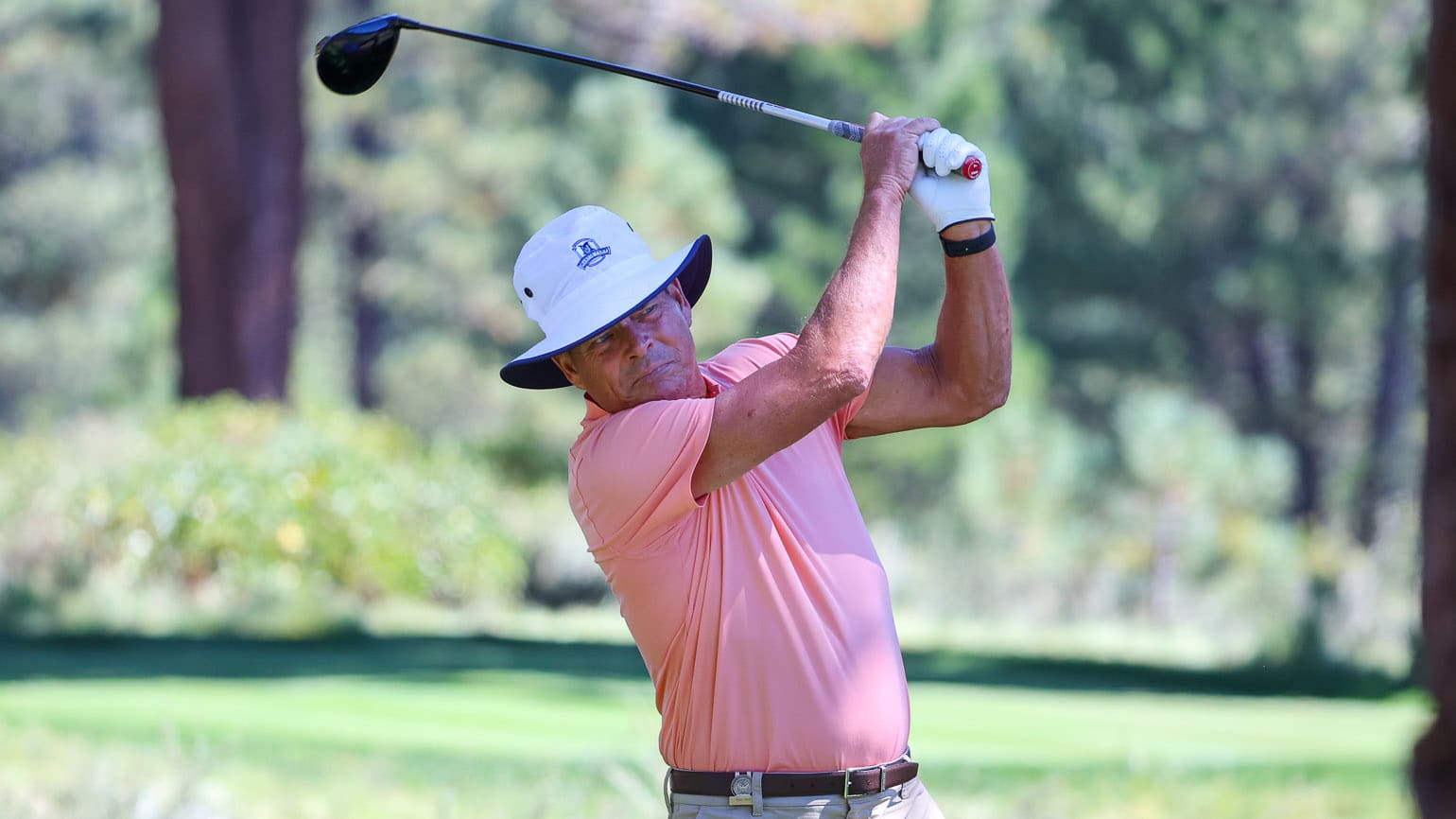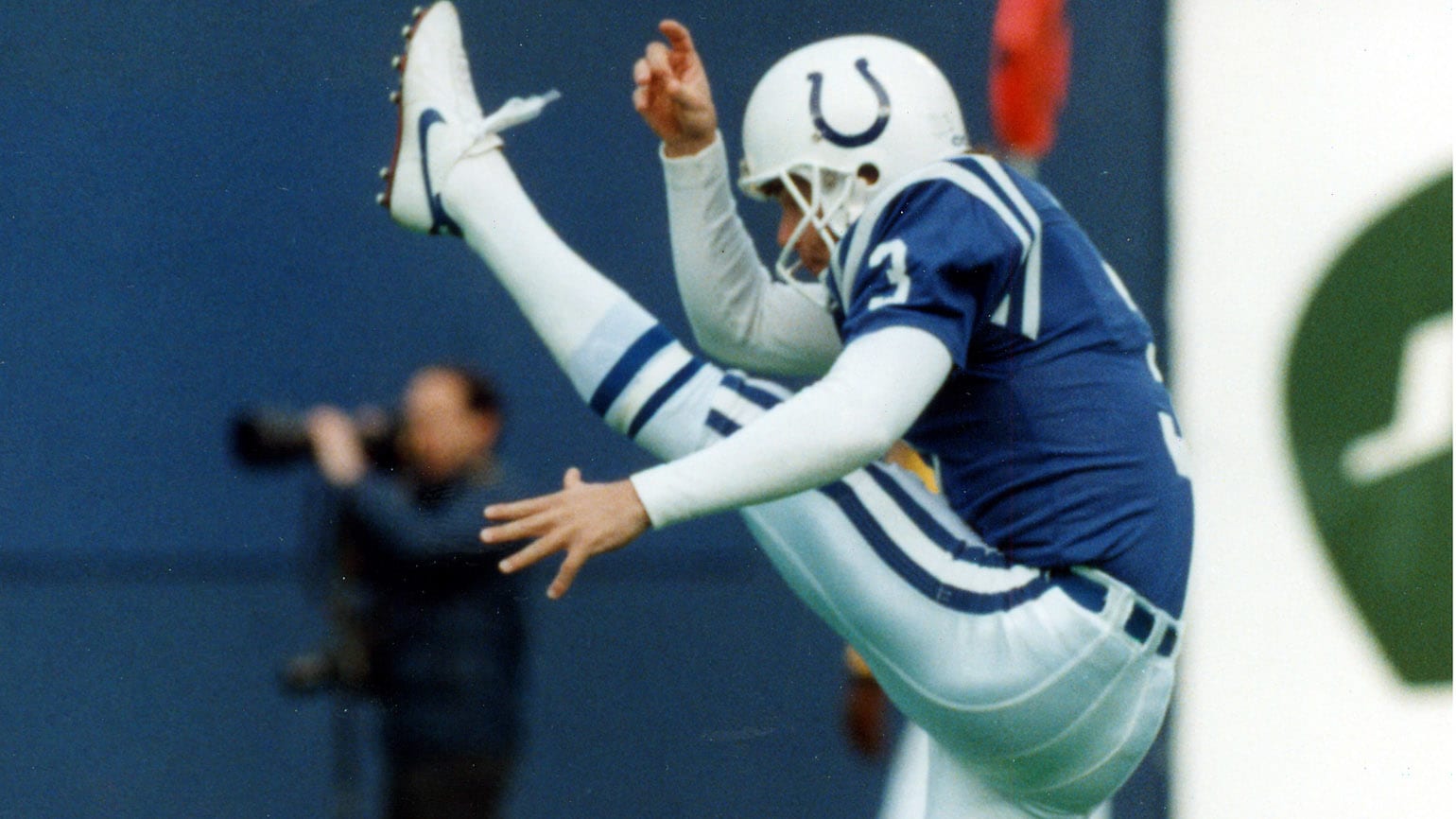Stark’s father, Bud, was a pilot for TWA (Trans World Airlines) and Rohn dreamed of flying fighter jets, so after graduating high school, he enrolled at the Air Force Academy’s prep school in Colorado Springs, Colo. But six months later, two important things occurred: doctors discovered a small curvature in his back making him ineligible to fly jets, and he proposed to his high school sweetheart – Ann and Rohn first met in the fourth grade – and the Air Force Academy didn’t permit its cadets to be married.
That didn’t turn out to be a bad omen. John Crowe, the prep school’s football coach and trigonometry teacher, was a former All-American defensive back at Florida State, and he sent film to Seminoles coach Bobby Bowden of the left-footed Stark booming two punts 80-plus yards.
“I had to look to see where [Florida State] was,” he recalled. “I committed the Cardinal sin – is it in Tallahassee or Gainesville?” Bowden flew him to campus in February of 1978 and offered him a scholarship without ever seeing him punt.
Stark would become the rarest of commodities – a two-sport All-American as he twice earned the honor as a punter (1980 and 1981 seasons) and as a decathlete (1981). He still owns FSU records for highest season average (46.0) and highest career average (42.7). He also played in two national title games in the Orange Bowl against Oklahoma (both defeats; 24-7 on Jan. 1, 1980) and 18-17 on Jan. 1, 1981). An eighth-place finish in the decathlon at the 1981 NCAA Track & Field Championship earned him All-America honors.
A year earlier, he qualified for the 1980 USA Olympic Trials in the decathlon, only to have his dreams dashed by an American boycott of the Moscow Games.
How good of a decathlete was Stark?
He could high jump nearly 7 feet, pole vault in the 17-foot range and run the 100 meters in 10.6 seconds. He also was proficient in the shot put and discus as well as the long jump. His weak event was the 1,500-meter run.
“[NFL] teams wanted to know if I was going to try for the 1984 Olympics,” said Stark, one of three kickers/punters to be invited to the 1982 NFL Combine (Morten Andersen and Gary Anderson). “Based on my chances of getting drafted, I said I would not.”
In the 1982 NFL Draft, the Baltimore Colts took him in the second round (34th overall), the second-highest pick for a punter behind Hall of Famer Ray Guy, who was a first-round selection by the Raiders in 1973. Stark thought he might go No. 25 to Dallas, which had expressed interest.
The Colts’ decision proved to be prescient. Stark was named to the 1982 All-Rookie Team by the Pro Football Writers Association of America. A year later, he was first-team All-Pro. Following 13 seasons with the Colts, the Steelers signed him for the 1995 season, a year in which they reached the Super Bowl but suffered a 27-17 loss to the Cowboys. All but retired in 1997, Stark, who punted for the Carolina Panthers in 1996, got a call from Seattle when its punter got hurt, and he played in four games before hanging up the cleats. He finished his career with 43.4-yard average and four Pro Bowl appearances.
Before enrolling at FSU, Stark never envisioned himself in the NFL, but Bowden could see he had a generational talent at the position, and all but predicted Stark would succeed on Sundays for many years.
In the offseason, golf fueled his competitive appetite. Some of the NFL’s best golfers have been kickers/punters, a list that includes Al Del Greco, Josh Scobee and Ryan Longwell. Stark, in fact, is just the latest NFL alum to qualify for a USGA championship, joining Kyle Williams (2019 U.S. Amateur Four-Ball), Tony Romo (2023 Four-Ball), Danny Woodhead (2021 Four-Ball) and Stan Humphries (2022 U.S. Senior Amateur).
While long since retired from the NFL, Stark has the physique of a pro athlete. He looks closer to 44 instead of 64, a product of staying in shape through exercise and a good diet. Outside of a right hip replacement 16 years ago, he also has remained injury free. Then again, punters don’t endure the same contact as running backs or linebackers.
These days, his only contact consists of a club compressing a golf ball. But he still gets that same satisfaction from a well-struck shot that he did from booming a 60-yard punt.
The last player taken in the NFL Draft is affectionately called Mr. Irrelevant. As the last player to gain entrance into the 2023 U.S. Senior Amateur, Stark hopes he’ll be more than relevant.
For his friends and family back in Maui, a successful week would be some welcome good news.
David Shefter is a senior staff writer for the USGA. Email him at dshefter@usga.org.

















